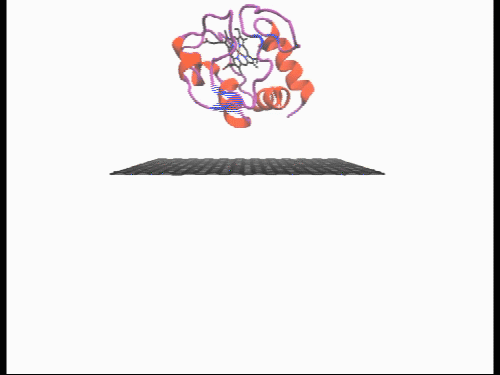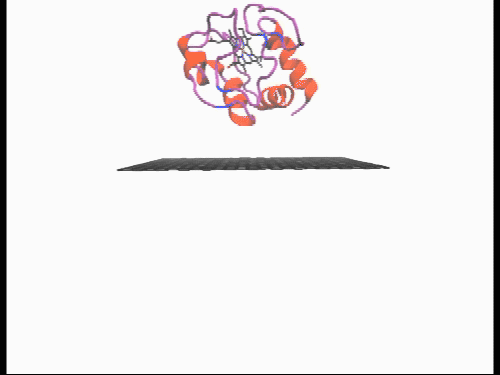Catching flying molecules with an atomic trampoline
How would you catch a ball flying at a supersonic speed – without destroying it? Now, what if the ball is a
fragile molecule with only a few nanometers in size – like a protein?
An international collaboration between scientists from the Max Planck Institute for Solid State Research and the University of Oxford has shown that landing proteins on a freestanding one-atom-thick membrane does the trick. Freestanding membranes possess a ‘trampoline’ mode which enable them to move freely perpendicular from its surface plane. As a result, these membranes are able to ‘cushion’ the incoming fast-moving projectile.
This principle is demonstrated in our study, experimentally and computationally, by a Cytochrome C protein colliding with a freestanding, single-layer graphene at two different energy regimes.
For low energy protein-graphene collisions, the gas-phase 3D-structure of the protein is found to be preserved on surface. This feat is understood to be due to the fast energy dissipation mechanism provided by the graphene ‘trampoline’ mode that facilitates efficient protein-to-graphene energy transfer.

Interestingly, for high energy protein-graphene collisions, the protein is found to unfold upon surface contact due to its compression. This mechanism could be important to interpret surface-induced dissociation of protein complexes in native mass spectroscopy and structural biology studies.

Why should we care? Preserving folded proteins on surface allows protein folding to be visualized and studied one-molecule-at-a-time by single molecule microscopy techniques such as scanning probe microscopy or electron microscopy. Visualizing single biomolecules and studying their structures at single molecule level are vital to understand how they function – which will allow us to understand biological events and design therapeutics that confront many health challenges facing our society today.












